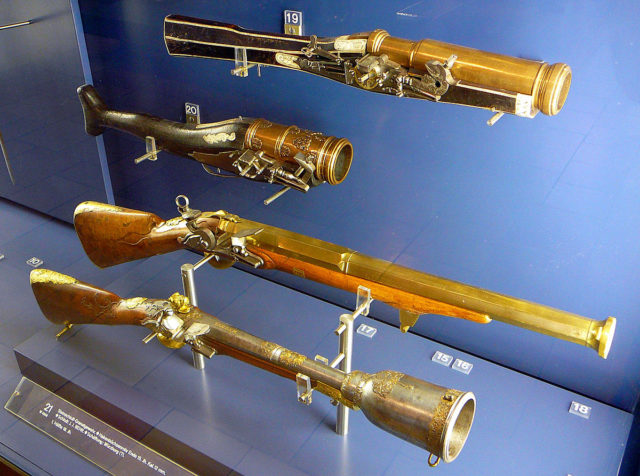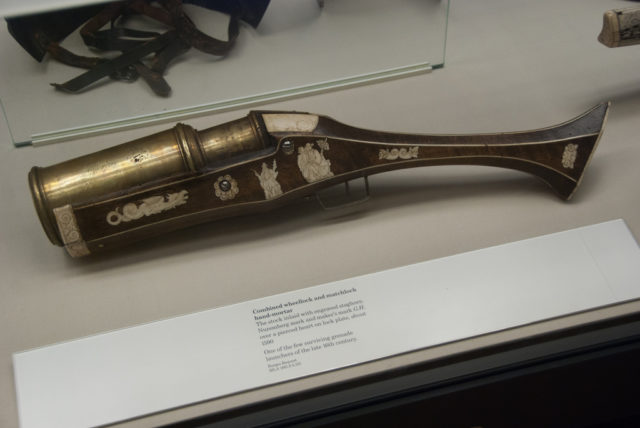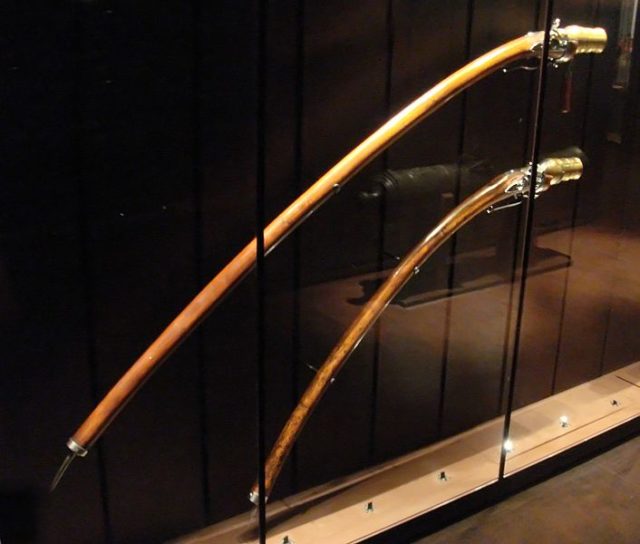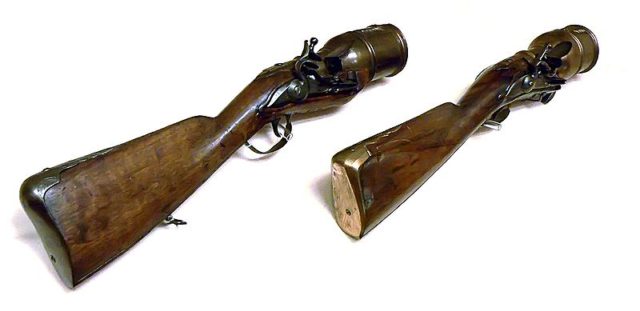The hand mortar is a firearm that was used in the late 17th century and 18th century to throw fused grenades.
Designed to throw an exploding grenade a further distance, and with more accuracy than could be done by hand, the hand mortar is more of a grenade launcher, with a wide barrel, typically of bronze, mounted on a musket stock.

It was first developed during the mid-1500s but reached its peak of popularity during the period 1670-1750.
Although used in relatively small numbers compared to other more conventional types of musket, hand mortars were employed by most European armies. Hand mortars can lob shots over the heads of intervening troops, even over high walls.

The first references to the type of grenade used in a hand mortar occur in a 1472 work entitled Valturius, where an incendiary prototype may have been produced.
The earliest known Hand Mortars (grenade launchers) were Wheellocks of the 1580s. The grenades were lit separately then the gun was fired to launch it.
However, widespread use of the explosive grenade does not occur until the early-to-mid-16th century under Francis I of France.


After priming the firearm and adding the gunpowder, the shooter would light a grenade fuse, place the grenade in the muzzle of the mortar and then fire it at the enemy.
The barrel was short, usually less than 2 inches to 4 inches long (however, some are reported to have barrels up to 13 inches long), and had a large bore to accommodate the grenade, usually between 2 and 2.5 inches.

The grenade is a useful battlefield weapon when used against enemies deployed in cover, or for clearing choke points.
Explosive grenades for this device were made from brass, glass, and possibly clay, and incendiary projectiles were made from canvas. Additional modifications attempted to light the grenade using the burning gunpowder.
However, accidents could occur if the weapon misfired and the lit grenade remained in the barrel, resulting in an immediate explosion.
An early casualty of this type of grenade was Count de Randan, who died of shrapnel wounds to the legs from a grenade during the Siege of Rouen in 1562.
